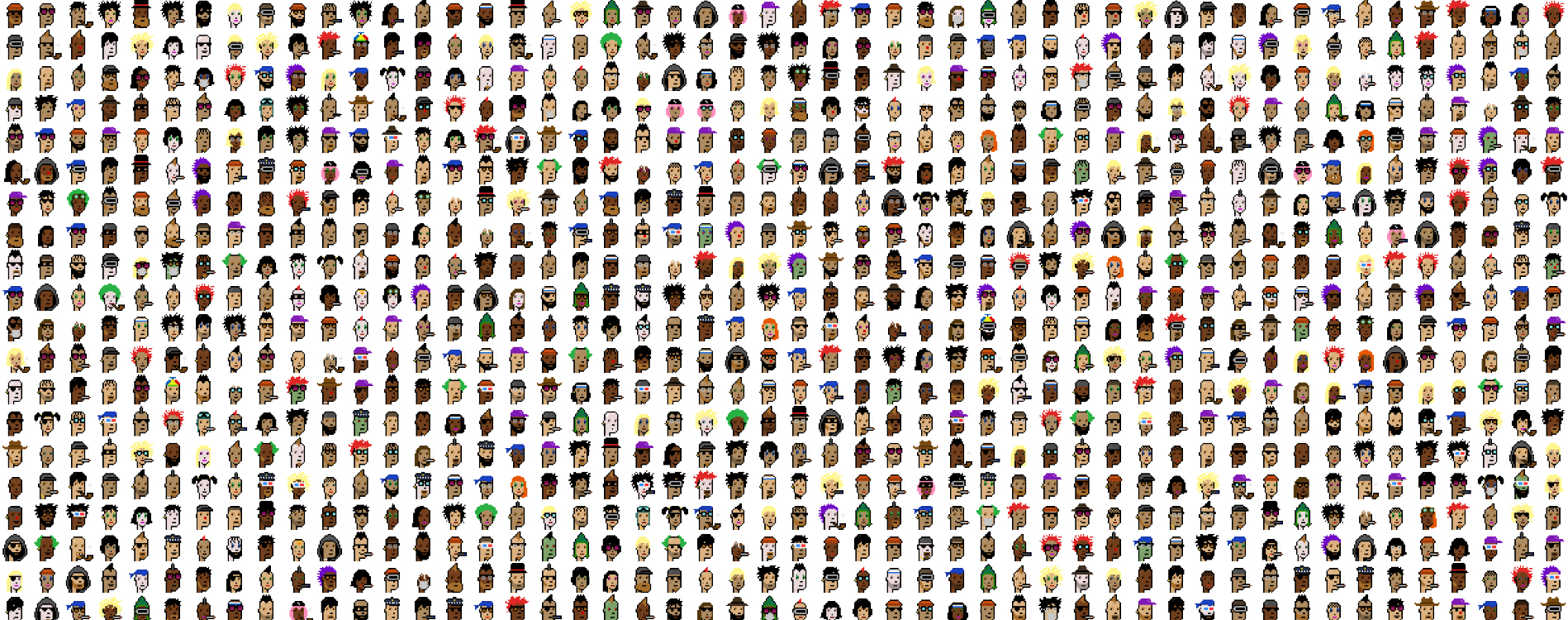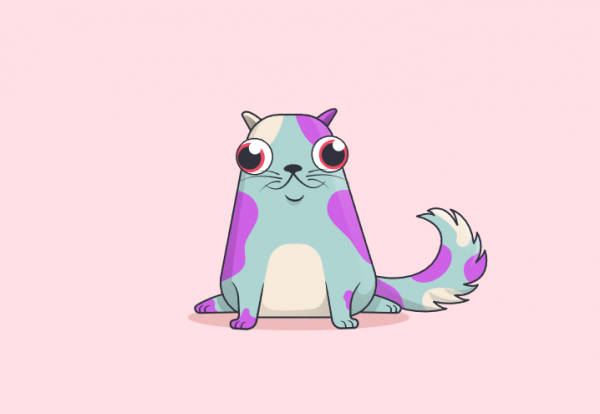Few things have recently been as divisive in the world of digital art as NFTs and their underlying blockchain technology. In this series, stewarded by our Art + Technology Lab, we will talk with cultural practitioners in and outside of the museum to explore what NFTs mean for institutions that collect digital art, as well as look at the artistic, curatorial, conservation, registration, and legal issues of this new digital format.
Let’s start with a primer:
What are they?
NFTs are non-fungible tokens that are registered on a decentralized blockchain (a distributed digital ledger that is maintained and updated by a network of computers performing complicated functions—but more about that in a minute). Their registration is basically a smart contract certifying them as unique, not interchangeable, which is what makes an NFT different from another digital file that can be endlessly copied. NFTs are tied to assets that can be bought, sold, or traded, and can represent physical or digital objects including images, audio, and video.
There are many online marketplaces that allow artists to “mint” (or create) and sell NFTs. Some are open by invitation only, while others are more democratic and allow anyone to mint NFTs. A potential benefit to artists using NFTs to sell their digital artwork is that they can set up a resale fee (typically around 5–10 percent) which they collect each time the work changes hands. This fee is “baked” into the NFT when it is minted.
Blockchain and Cryptocurrency
A blockchain is similar to a database, but rather than storing its data in tables, it is stored in blocks that are linked together. As new data is added, new blocks are created, one after the other. Each block is given a timestamp when it is added to the chain, and these blocks compose a sort of timeline that, for all practical purposes, cannot be edited or revised. A distributed blockchain is maintained by a network of computers: Each computer has a copy of the same data and is constantly checking in with the others, so if information on one machine is tampered with, it will be easily detected and rejected by the other computers on the network. Maintaining this network, where the computers “agree” on a common ledger, means performing a series of complicated calculations, a process referred to as mining, and those who dedicate their computers to this labor are rewarded in cryptocurrency native to their respective blockchain. For example, miners working on the Bitcoin blockchain are rewarded in Bitcoin, while miners working on the Ethereum blockchain are rewarded in Ether.
Machines performing calculations to maintain a blockchain can consume large quantities of power, which can have a major environmental impact: It has been said that some blockchains use more power than entire countries. As a cryptocurrency goes up in value, the competition to mine it heats up, adding even more miners and their power-consuming computers to the grid.
Alternatives
This process of maintaining a blockchain is called the proof-of-work protocol, and while there are less energy-intensive approaches, it is the most common. Some promising alternatives, like the proof-of-stake protocol, use less energy, and although they have yet to be embraced at the scale of proof-of-work, leading blockchain Ethereum is planning to switch from proof-of-work to proof-of-stake by the end of 2021.
Although NFTs are still a nascent way to bring artwork to market, they have already been embraced by many artists, especially by those who already work in the digital space (and who, until quite recently, were often overlooked because the art establishment was unsure how to present and sell their work). This adoption has been encouraged by the increasing efficiency of some blockchains and the spike in value many cryptocurrencies are experiencing, but things are far from reaching consensus. Environmental costs aside, the blockchain has also been decried for reinforcing or extending socially oppressive mechanisms already in existence.
What does all of this have to do with museums?
Let’s ask Tomas Garcia, LACMA’s AVP of Technology:
Thanks for taking the time to chat. I remember a few years ago you gave me a CryptoKitty (a virtual cat NFT) when my cat died. I have to say it is much easier to care for than the real thing.
Absolutely, though I can’t guarantee that a CryptoKitty will offer the same level of companionship. I’m also happy to see that the gifted kitty hasn’t skyrocketed in value, as it would have been painfully awkward to have asked for her back.
That may have been the first time acquiring a NFT was discussed as part of Official Museum Business at LACMA. But honestly, how long have NFTs and blockchain been on LACMA’s radar?
TurkTurk was certainly my first NFT purchase, and the rise of CryptoKitties probably marks the window in time when NFTs started popping up on our radar. By that point we were quite familiar with blockchain technology, cryptocurrencies, tokens, and coins, but the idea of storing and selling non-fungible assets was just starting to emerge as a compelling use case. CryptoPunks were probably the first NFTs on my radar, though I certainly didn’t take them too seriously at the time and certainly didn’t expect that they would sell for millions at auction.
Since that time, NFTs have moved more into mainstream focus. This visibility is largely due to the astounding dollar amounts that high-profile NFTs have fetched at auction, but is also a result of a wider understanding of ways in which this technology could enable innovation in areas like finance, media distribution, and the arts.

What are some of the potential positive outcomes of engaging them?
There are a lot of good reasons for LACMA to be engaging with NFTs and blockchain right now.
First and foremost, our artists and our audiences are engaging with NFTs. Just like the rest of us, artists are witnessing the impact and demand for NFTs, and many of them want to get involved. LACMA’s curators, educators, and conservators are in constant dialogue with artists and need to be able to speak to this emerging field.
Many in our community may also look to a public art institution like LACMA to serve as a resource in understanding how to approach this space. Going back to the establishment of LACMA’s Art & Technology Program back in the 1960s, LACMA has served as a thought leader at the intersection of art and technology, and we continuously strive to uphold that designation. The museum has engaged with digital artworks for decades in many different mediums, and with NFTs and blockchain, we’re witnessing a new framework for those mediums. LACMA’s mission statement commits us to collect, conserve, exhibit, and interpret works of art to create meaningful educational, aesthetic, intellectual, and cultural experiences. As these works transition into formats that may be technically or conceptually complex, our role as interpreters may become even more important.
Another reason for LACMA to engage with NFTs is that museums will acquire NFTs. Our interests in engaging in this space aren’t purely selfless: 2021 Tomas is looking out for 2025 Tomas!
There are a lot of artists creating NFTs right now for a number of reasons—research, entertainment, and profit, to name a few. As the landscape continues to develop, these NFTs will be bought, sold, stored, lost, and destroyed, but ultimately this is a cultural and historical moment that merits observation and preservation. Whether through acquisition, donation, or commission, it’s inevitable that LACMA will end up with NFTs in our collection, and when that time comes, we need to know how to conserve and exhibit those assets. The process of acquiring and exhibiting an artwork includes departments across the museum—curatorial, legal, registrars, installers, conservators, and countless others. Each of these groups will have new questions and challenges unique to digital artworks and NFTs. The work we do in this area now, while the format is still materializing, has the potential to save years of headaches for museums in the future. By engaging with this space now, we can ensure that care and consideration go into the creation, conservation, and contextualization of these artworks now and in the future.
What are some of the downsides?
Many of the downsides of participating in this conversation now are shared across industries, though some may be specific to museums.
For one thing, it’s very early in the process. There are a lot of interesting possibilities for where the NFT space could go, but as with any area moving this quickly, time or resources invested risk going out the window if the NFT roadmap rapidly changes direction. This is true for anyone working in the NFT space right now, and is simply a risk that comes with working in experimental spaces.
A risk that may be unique to a museum participating in this conversation is the weight that we carry. As the largest encyclopedic museum in the western United States, we have to take into consideration that our exhibitions, public programs, publications, and acquisitions have significant impact on the arts and culture space. As a public institution, we also need to be considerate and deliberative about where we invest our staff and financial resources. So while we may not be participating in the record-setting auctions, we are looking toward the horizon to understand what this could mean for the art world, for digital artists, and for the collection and exhibition of these artworks.
Overall, this is an exciting integration of technology and art that could serve as a launchpad for artists, designers, and creators who work in native digital formats. With advancements in NFTs, we hope to see improvements in the efficiency of these platforms, diversification of their opportunities and audiences, and new mechanisms for artists to support themselves and provide access to their work.
Stay tuned for Part 2 of NFTs and the Museum.
The Art + Technology Lab is presented by

The Art + Technology Lab is made possible by Snap Inc. Additional support is provided by SpaceX and Google.
The Lab is part of The Hyundai Project: Art + Technology at LACMA, a joint initiative exploring the convergence of art and technology.
Seed funding for the development of the Art + Technology Lab was provided by the Los Angeles County Quality and Productivity Commission through the Productivity Investment Fund and LACMA Trustee David Bohnett.



